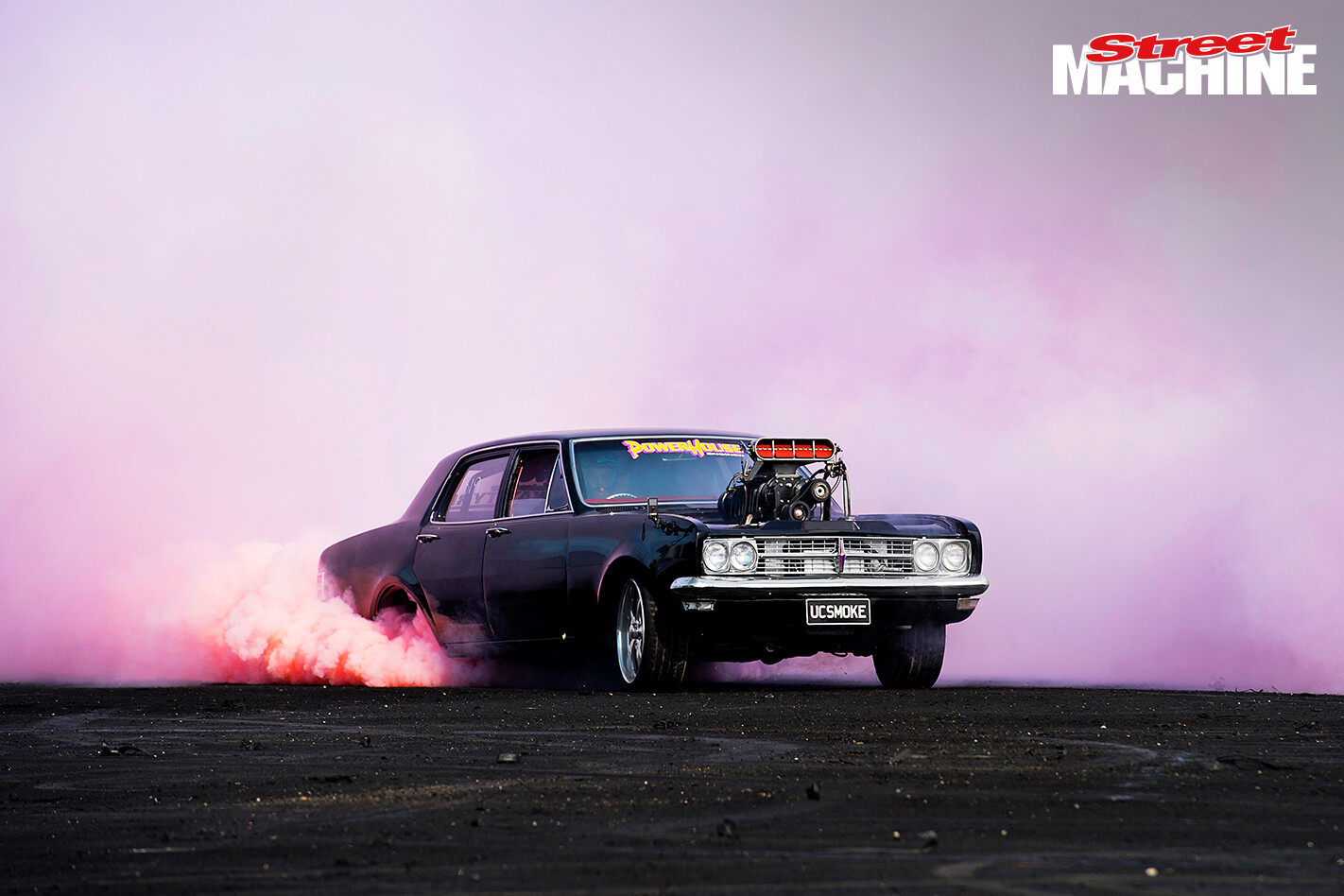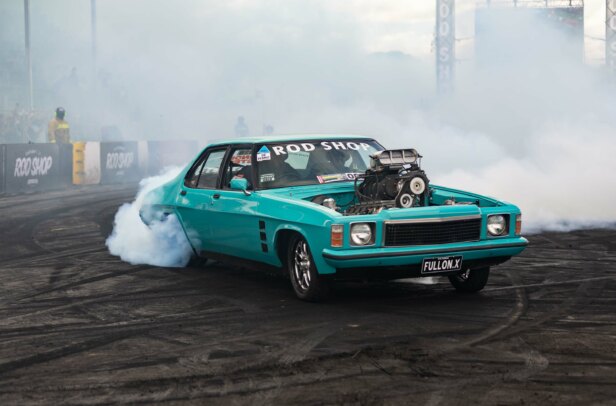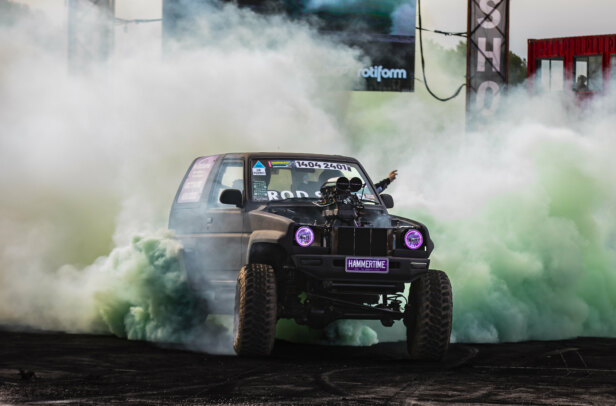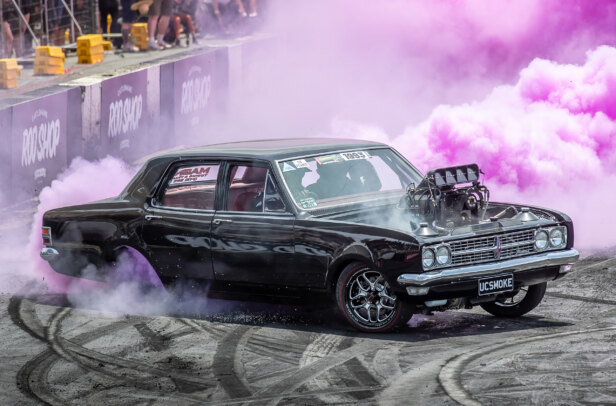EVER since Henry Ford started power-sliding his 539-cube Sweepstakes racer in 1901, burnout smoke has been white. Always. But this changed a while ago when a couple of enterprising competitors rocked up to an event with expensive imported tyres that made coloured smoke, blowing everybody away.
Enter Highway Tyres. They’re no strangers to the burnout scene, having supplied burnout maestro Steve Loader with his tyres of destructive choice for the past few years. And it was this relationship, combined with a competitor survey Highway conducted at the 2012 Ultimate Burnout Challenge (where more than 100 people expressed interest in buying coloured burnout tyres), that moved Highway to make these specialised tyres locally, giving birth to the Highway Max Coloured Smoke burnout tyre. Nowadays, the colour of a burnout competitor’s tyre smoke is as much a part of their signature as their machinery and array of tyre-frying tricks.
So what’s the secret behind coloured smoke? First, we need to explain why a regular tyre makes black smoke when you throw it onto a fire, yet produces white smoke when it’s flung around a doughnut pad.
For a tyre to ignite (ie burst into flame), it needs to be heated to at least 400 Celsius for some time. The physical act of burning the tyre not only releases the petroleum products used in its manufacture, it also releases a cocktail of toxic chemicals that includes benzene, lead, and even more esoteric toxins such as polycyclic aromatic hydrocarbons (PAHs) – all of which are extremely dangerous to breathe. It’s this concoction of burning oils and chemicals that creates the thick, dark cloud of smoke when a tyre combusts.
In a burnout, the tyre spins rapidly on the tarmac creating friction and so heat, though the temperatures reached are well short of what’s needed to ignite it. The heat created from the abrasive spinning action oxidises certain compounds within the rubber, which vaporise and are released as white smoke (the grey tinge often seen in burnout smoke is caused by fine rubber particles mixed in with the smoke).
The secret to creating coloured burnout smoke is to introduce particular compounds into the raw rubber that vaporise in a coloured plume at the temperatures created during a burnout. So what are these compounds? Well, Highway Tyres aren’t saying. Think of it as the tyre’s 11 secret herbs and spices.
As for how they’re made, Highway Tyres are Aussie remould specialists, and so their Coloured Smoke tyres are high-quality remoulds – which certainly helps keep costs down. To ensure they’re up to the brutality of a stout burnout, Highway specifically selects only the best carcases. The tread and sidewalls are buffed, removing just the right amount of material. A thin layer of fresh rubber is then applied to the sidewalls before the all-important, pre-coloured rubber is applied to the tread area. At this stage the tyre looks more like a slick. Also, the pre-coloured rubber looks identical to the non-coloured variety, so a coloured stripe is added to aid identification. From there the tyre goes into the segmented press where, over a period of 32 minutes at 155 Celsius, the tread pattern and sidewall are moulded.
| Watch next: The best gender reveal burnouts – Video
After a final inspection, which includes inflating to 65psi and spinning it up to check balance, it’s ready to destroy the nearest burnout pad. As Karl from the warehouse says, “This is one of the few industries where all the hard work goes up in smoke – we love it!”
Highway Max Coloured Smoke remoulds are just as tough and long-lasting as their regular remoulds – an attribute Steve Loader has proved time and again. However, Highway do not wish to promote illegal street burnouts. Therefore their coloured tyres are for competition only.
To add colour to your next skid, contact the experts at Highway Tyres. They have outlets in every state. Go to www.highwaymax.com.au to find out where.




Comments